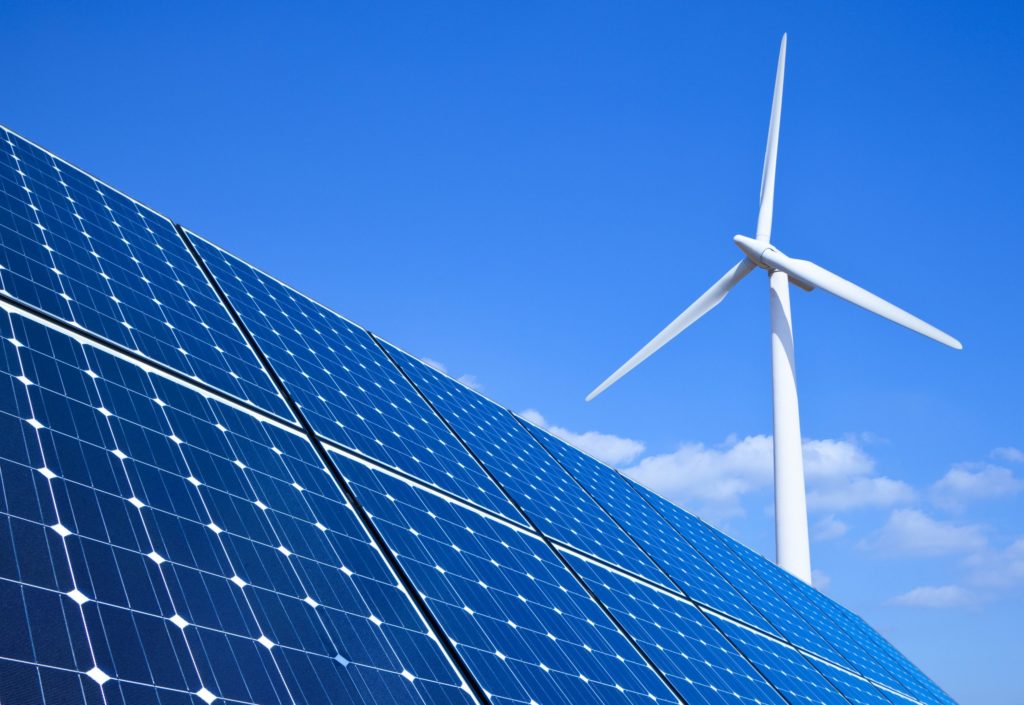For Clean Energy, Both Minerals and Policy Are Short of What’s Needed
One division among environmentalists that has arisen recently is the contrast between pro-clean energy groups and conservationists that oppose new development of any kind. One reason for this is an irreconcilable math problem: There just aren’t enough minerals available at current production levels to transition away from fossil fuels. Earlier this year, the R Street Institute put some numbers to this issue, estimating exactly what the gap is between current production and what it would take to achieve net-zero emissions in the United States. The main takeaway is that if a clean energy transition is a priority for policymakers, they’re going to need to find some improvement on the status quo, which has resulted in a mishmash of mine approval and rejections.
Mineral Scarcity Looms
R Street’s research notes that current U.S. mineral production falls far short of what would be required to achieve net-zero emissions in the United States. Looking at total upstream mineral demand, U.S. demand would increase by 121 percent for copper; 2,007 percent for cobalt; 504 percent for nickel; and 13,267 percent for lithium. Without any new mines, the United States would be expected to be import-reliant for 74 percent of its copper demand, 98 percent of its cobalt demand, 98 percent of its nickel demand and 100 percent of its lithium demand. Assuming planned mines enter service, those figures would fall for copper (41 percent) and lithium (51 percent) while remaining high for cobalt (98 percent) and nickel (95 percent) due to high volume of demand.
The counterpoint to all of this is that, while a net-zero emission United States may be a political talking point, it is not policy. However, clean energy mandates have certainly gained momentum. The Environmental Protection Agency (EPA) has proposed requirements that two-thirds of cars sold by 2032 should be electric vehicles (EVs), which (if finalized) would considerably increase demand for lithium, cobalt and nickel. The EPA is also proposing carbon capture requirements for fossil fuel power plants, which would likely push electricity producers toward renewables and battery storage that may be less costly than complying with a carbon capture mandate.
Rising demand for clean energy and batteries used for EVs and energy storage is causing mineral prices to rise as well. The International Energy Agency noted price increases of 738 percent for lithium, 156 percent for cobalt, 94 percent for nickel, 76 percent for aluminum and 34 percent for copper from 2021 to 2022. Not only did these increases exceed the prior largest annual increase for each resource, they are also far above average. In the 2010s, copper prices increased an average of 2 percent annually, while lithium prices increased an average of 13 percent. As R Street noted in its analysis, this trend is likely to continue due to the gap between current mineral production and long-term clean energy priorities favored by politicians.
National Security Concerns Prompt Domestic Mineral Interest
The war in Ukraine has highlighted the risk of foreign dependency upon adversarial regimes. In 2019, Europe relied on Russia for half of its natural gas supply. The policy change required to address the situation caused massive increases in natural gas prices, which went from around 88 euros per megawatt-hour (MWh) to a peak of 339 euros per MWh. Prices have since stabilized and are down to 25 euros per MWh, partially because a mild winter spared Europe from a potentially devastating energy crisis. But the risks of relying on Russian supply were already apparent.
U.S. policymakers are concerned that reliance on foreign minerals, particularly those with supply chains controlled by Chinese state-owned enterprises, could put the United States in a vulnerable position. Even in the case of lithium, of which China is not a major producer, their domination of refining capacity means clean energy, EV and battery producers often must rely on Chinese suppliers.
The challenges of moving away from reliance on Chinese supply chains are exemplified by a tariff for Chinese solar panels produced with slave labor, which the Biden administration has repeatedly put on hold. For the administration, meeting its clean energy objectives without importing Chinese product is not possible. This has created more impetus and attention to the need for increased domestic mineral production, as those producers would still rely on Chinese mineral suppliers even if EV and solar module manufacturing rises in the United States.
Recent Mining Sector Developments Highlight Continued Challenges
We are currently seeing a mishmash of mines with entirely different requirements and hurdles to contend with. Some get approved, and others do not. While every mine is different, the administration’s uneven approach to permitting highlights a risk of having such a key issue that underpins other policy priorities subject to politicization. Here are some highlights.
Lithium
Ioneer recently discovered that Rhyolite Ridge, a mine in Nevada, may hold 168 percent more lithium than initially projected. (For reference, while R Street estimated the mine could provide 8 percent of the nation’s lithium needs for net-zero emissions, that number could now be as high as 20 percent.) The mine has received a $700 million loan guarantee from the administration, which also utilized emergency powers under the Defense Production Act (DPA) to subsidize lithium mining. The biggest challenge for this mine has been navigating Endangered Species Act requirements to protect a local species of buckwheat.
An even larger Nevada lithium mine, Thacker Pass—which R Street estimated could satisfy 25 percent of U.S. lithium demand for net-zero emissions—has been given a green light after a court found that nearly all of the land contains lithium. This is key because a 2022 court decision restricted an Arizona mine’s ability to store waste rock on lands that don’t contain extractable metals, essentially trying to limit its land use footprint.
Copper
Although the administration was expected to approve a land transfer for Rio Tinto’s Resolution Copper mine this year, the transfer and its updated environmental impact statement have been delayed indefinitely. R Street estimated that the mine—one of the largest copper mines ever proposed in the United States—could fulfill 14 percent of the nation’s copper demand under a net-zero emission scenario.
Progress on another major proposed copper mine, Pebble Mine, has effectively stopped due to an EPA restriction on the disposal of mining waste near the site. R Street estimated it could satisfy 12 percent of demand for a net-zero emission United States.
Nickel
When the Biden administration invoked the DPA for critical minerals, it pointed to Talon Metals’ Tamarack mine in Minnesota—which R Street estimated could supply 2 percent of the nation’s nickel demand under a net-zero emission scenario—as a key project. However, the administration implemented new wilderness protections that effectively block a similarly sized Minnesota nickel mine even if its permits—approved under the Trump administration and rejected under the current one—are approved again in the future.
Cobalt
Jervois’ Idaho Cobalt Operations mine was slated to open soon, but construction has stopped due to depressed prices. Although they have risen in general over recent years, cobalt prices are currently below their peak, disrupting the economics of the new mine. The cause for these falling prices is lower-than-expected demand for Chinese electronics.
This is not the first time that a mine, which can take many years to approve, has been canceled at the last minute due to changing economics. For example, Bear Lodge aimed to take advantage of high rare earth element prices but was canceled when prices later fell.
However, because state-owned enterprises control so much of foreign mineral supply chains, new mines are also vulnerable to being squeezed out of the market. This is because competitors can rely on their parent government’s subsidies to depress prices artificially. Although the Idaho cobalt mine does not appear to be a victim of such circumstances, its sensitivity to price swings highlights this vulnerability.
The Effect of the Status Quo
Overall, the current situation in the mining sector is mixed. Some mines are succeeding; others are struggling. But the troubling theme is that success or failure is rarely attributable to genuine economic conditions that should govern market entry.
The uneven political treatment of mineral projects is also frustrating. Some get DPA subsidies or loan guarantees, and others do not. Two nickel projects, both in Minnesota and of comparable size, have vastly different stories: one is a poster child for the Biden administration while the other has been blocked.
Americans lose under this kind of system because when market entry is delayed, whether by politicking, market manipulation or genuine cause, artificial scarcity raises costs over the long term. Even worse, to the extent that politics may be more of a deciding factor in mining operations than merit, we could see incentives for productivity improvement undercut.
As R Street has noted in its critiques of the DPA, continued utilization of the law means that lobbying becomes a surer investment strategy for businesses than success in competition.
Policy Options
The most obvious policy option moving forward is to further improve the permitting process, and especially reform judicial review risks that R Street research has noted tend to be a greater factor in permitting timelines. When it comes to minerals, clearer environmental review processes can reduce the role of politically appointed bureaucrats and return more of the permitting review to those responsible for ensuring environmental compliance.
A policy that relies heavily on subsidies, such as the Inflation Reduction Act, is unlikely to remedy any mineral concerns—even with its domestic content subsidy bonuses—because it is not a lack of capital keeping new mineral production from the market.
While permitting reform could bolster domestic mineral production, the United States can’t ignore the risks of dependency upon Chinese suppliers. One way to address this is “friend-shoring;” however, the ability to buy resources from friendly nations only emphasizes the importance of open trade with key partners.
Conclusion
No silver bullet will ensure the United States easy access to all the minerals it needs without any tradeoffs. But the degree of foreign dependency and associated risks could be substantially lessened for select minerals by implementing clearer processes that are less vulnerable to changing political or economic conditions. While permitting reform can improve environmental regulation by addressing litigation risks and restoring focus on environmental compliance, the rising cost of minerals will keep the issue relevant beyond this Congress.





